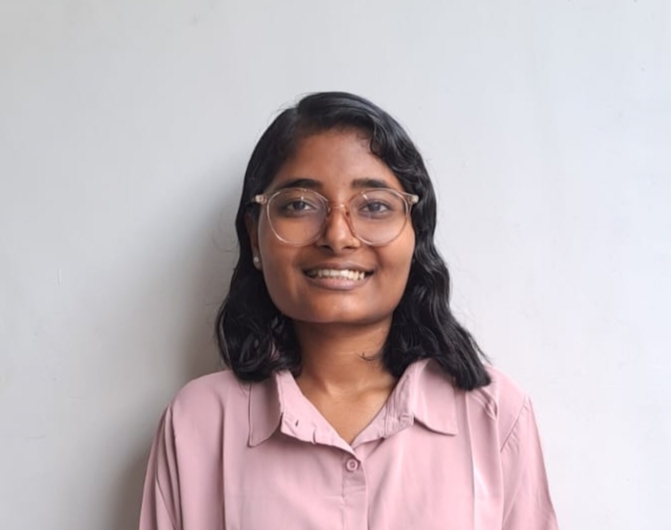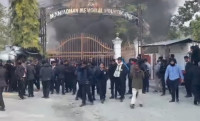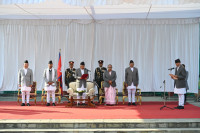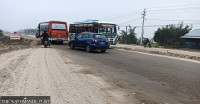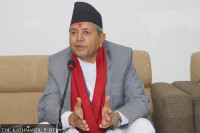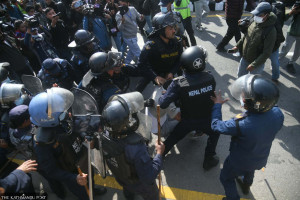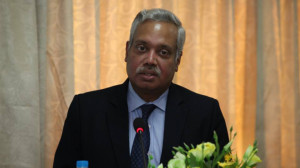National
Experts highlight pressing issues of Nepal’s queer community
At a discussion organised by the Post, queer activists discuss the barriers members of the community are facing to access their rights and media representation of queer issues.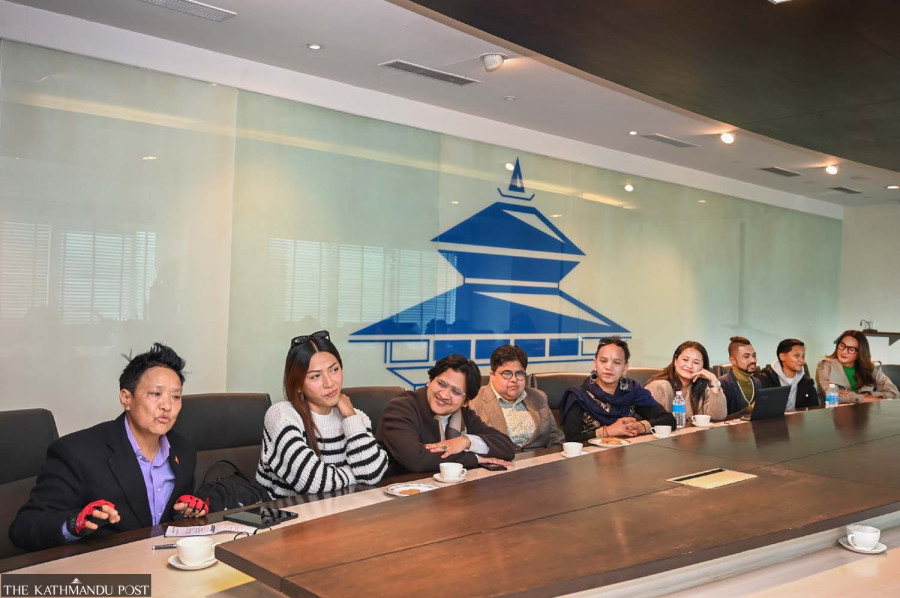
Aarati Ray
The Kathmandu Post organised a special roundtable discussion on LGBTQIA+ rights, challenges, and media representation on Sunday. Speaking at the discussion, moderated by Post’s Aarati Ray, experts highlighted how despite constitutional and judicial reforms, the LGBTQIA+ community is still facing barriers in accessing basic rights and services. They also shed light on the need for authentic and inclusive media representation of queer issues.
What follows are edited excerpts of the opinions presented by eight experts at the discussion.
Petter Rai, transgender activist and programme coordinator at Blue Diamond Society
The intersectionality within the queer community is being recognised these days which is a positive achievement for us. Another achievement is the recognition of same-sex marriages. But the registration is only provisional. What the government needs to understand is that marriage cannot be temporary; we don’t want any different laws or policies. We just want the existing policies to be gender and sexual minorities-friendly.
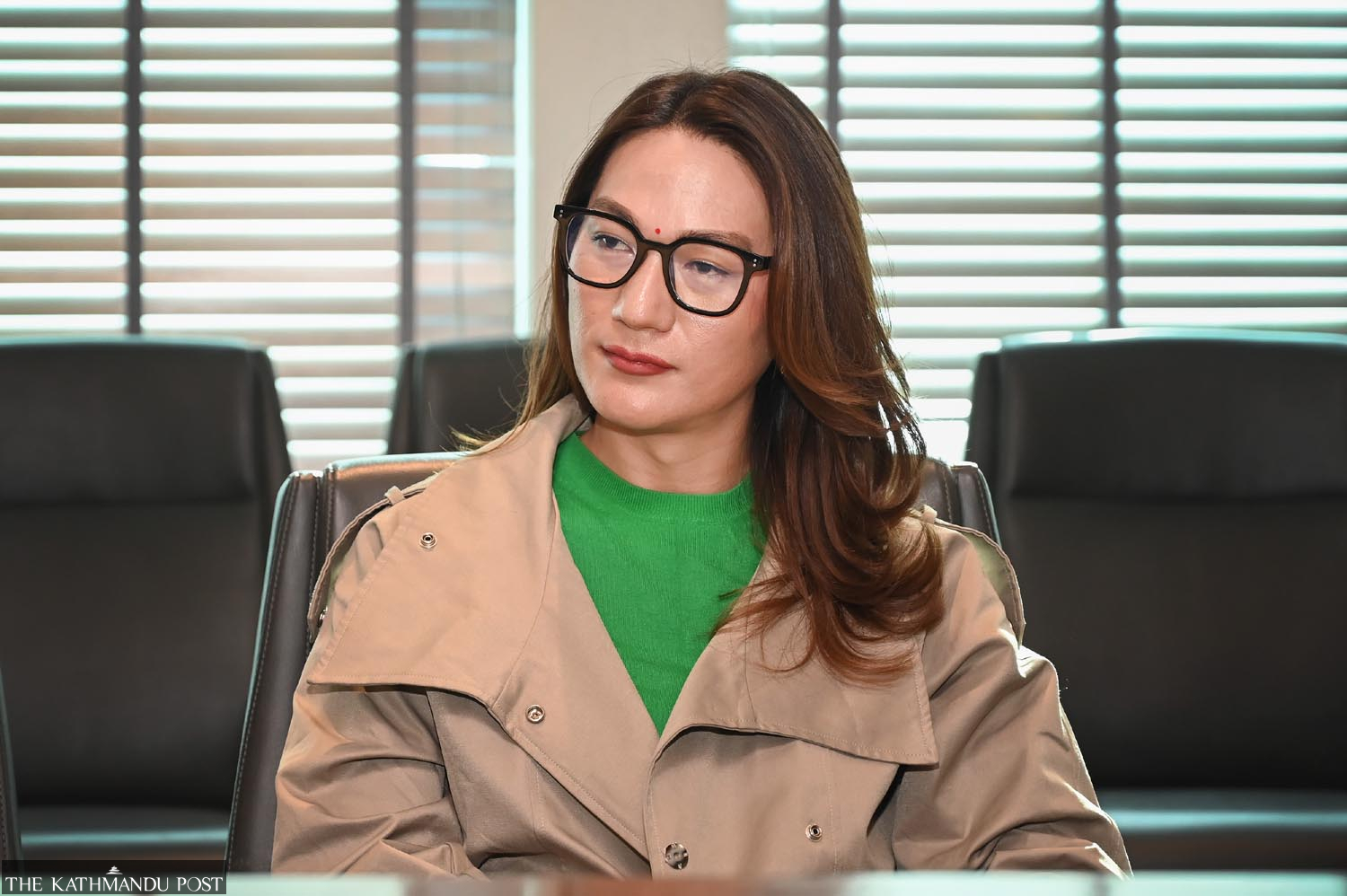
The Civil Code adopted in 2017 still defines marriage as a union between a ‘man’ and a ‘woman’. We are fighting to change this definition to reflect it’s a ‘union between two individuals’. This is our biggest challenge currently.
Badri Pun, chair of Inclusive Forum Nepal
Data published on March 24, 2022 revealed that the population of sexual and gender minorities in Nepal accounted for a mere 0.01 percent of the total population, with regional variations in representation. However, this representation was incomplete and inadequate as it didn’t capture the nuances of the community. The census failed to recognise the community as a distinct category in the main questionnaire, an oversight that has led to a lack of comprehensive data concerning their unique needs and challenges.

The media in general only cover events like parades and dance events. The focus should also be on issues related to citizenship rights, employment, education curriculum, and health rights.
Pratichhya Chapagain, a blind lesbian woman and a member of Rainbow Disability of Nepal
Though implementation is lacking, getting same-sex marriage on paper is a big thing for us. Because it’s not in India or in China. So, in terms of activism and advocacy, Nepal has made some progress. But the progress is surfacial. Especially for a blind lesbian women like me, I face double marginalisation.

In activism of queer issues too, the disability factor is not included. In Nepali activism and policy making, intersectionality of disability and queerness should be thoroughly included.
Honey Maharjan, secretary of Samarpan Savya Samaj Nepal
I ran for the position of mayor of Kirtipur Municipality in the 2024 local elections. I didn’t win the race but it was a great opportunity for me as it made me realise how queer acceptance is increasing and why we need queer representation in policy making.

Till now, we have only had the example of Sunil Babu Pant. There is discussion going around on what will happen after Trump’s stoppage of fundings through agencies like USAID for queer activism in Nepal. But I think it’s a good opportunity for activists and organisations to channelise more support from the government. If Trump stops funds, why can’t that gap be fulfilled by our own government? Our activism surely won’t stop and we will continue to fight.
Bimala Gurung, programme officer at Mitini Nepal
We are pleased with the government’s same sex marriage registration process. But it falls short of offering full marriage rights, including those related to property, adoption, and tax exemptions. What’s more, some policymakers are even homophobic and resistant to the idea of marriage equality. Government needs to include queer people in every step from planning to policy implementation.

Mitini Nepal is still fighting a court case for marriage equality and I hope the verdict is released soon. When that happens, hopefully in Nepal too, we can see a day like Thailand, where queer people can register their marriage without any hurdles and celebrate proudly.
Anmol Rai, trans activist and winner of Miss Pink Nepal 2024
Many challenges remain in terms of trans health care and reproductive rights. Proper hormone replacement therapy (HRT) and gender affirmation surgeries are still far-fetched for us. Out of the few available, they are expensive, forcing queer individuals to travel to abroad or take dubious hormone medicines. Health professionals themselves are not trained and made aware about HRT services and many other issues about trans reproductive health.

Though media representation has progressed over time, it is still not satisfactory. Youtube channels and social media pages especially tend to hypersexualise and stereotype us. I am one of the victims of this, so we hope for sensitive, informed and empathetic representation from the media.
Chhesang Ghising, programme officer at Queer Youth Group
The lack of gender-friendly toilets for trans people is a barrier to our safety, health, and well-being. Because of it, trans people are harassed. I have experienced it firsthand. Even when I go to government offices for paperwork, I tend to not use the bathroom for hours for fear of what I might face.

Many trans people avoid public bathrooms due to fear of harassment or assault. Moreover, the concept that only females have periods needs to be changed, starting with the curriculum itself. We need to understand that every individual who has an ‘uterus’ can get a period.
Birat Bijay Ojha, queer activist, writer and researcher
These days, queer youths have gotten the safe space to be themselves and they have been ‘out-proud and loud’. It’s a positive change from when I was sixteen. Though things have improved, media representation of queer issues can be improved, especially in the movies. As a queer person, I would love to see queer characters played by queer actors.

Instances of trans women played by men just reinforces the heteronormativity idea and the notion that being trans is just putting on a get up or make up. Moreover, queer stories in the media are often represented through inherently tragic narrative, making us pitiful characters. Queer coverage with a positive angle, empathetic approach and in consultancy with queer individuals is what we need.




 6.12°C Kathmandu
6.12°C Kathmandu